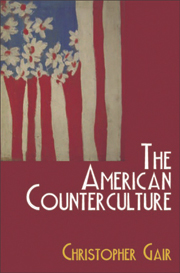Introduction
from Part Two - 1961–1972
Published online by Cambridge University Press: 05 August 2013
Summary
We see the hope of tomorrow in the youth of today. I know America's youth. I believe in them. We can be proud that they are better educated, more committed, more passionately driven by conscience than any generation in our history.
Richard Nixon, 20 January 1969You see these bums, you know, blowing up the campuses. Listen, the boys that are on the college campuses today are the luckiest people in the world, going to the greatest universities, and here they are burning up the books, storming around.
Richard Nixon, 1 May 1970Tin soldiers and Nixon's comin’
We're finally on our own
This summer I hear the drummin’
Four dead in Ohio
Crosby, Stills, Nash & Young, ‘Ohio’ (1970)Following the death of the Grateful Dead guitarist Jerry Garcia on 9 August 1995, a tie-dye flag was flown at half-mast over San Francisco's City Hall. Tributes were paid by legions of Dead Heads, including then President Bill Clinton, and a few days after the funeral fans gathered in Golden Gate Park to listen to the group's music and share personal and collective reminiscences. In keeping with the ideology of (many of) his generation, some of Garcia's ashes were scattered in the Ganges, the rest in the sea by the Golden Gate. The ‘60s had been over for a quarter of a century, but the death of the best-known member of the quintessential countercultural band of the era made the national news and seemed – especially with the subsequent painful yet very public dissolution of The Grateful Dead – ironically to show that nostalgia for the spirit of the decade lived on.
- Type
- Chapter
- Information
- The American Counterculture , pp. 119 - 138Publisher: Edinburgh University PressPrint publication year: 2007



